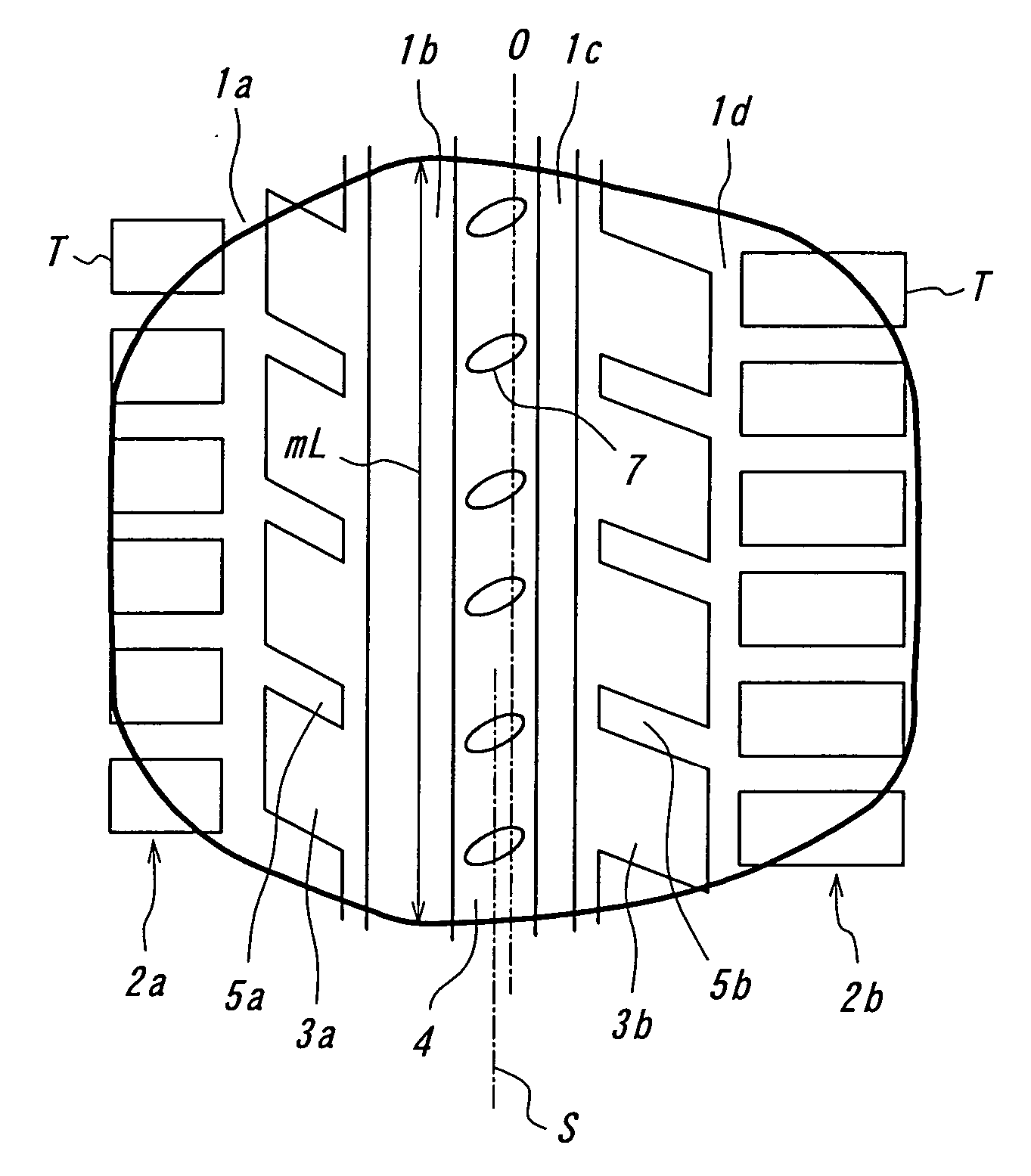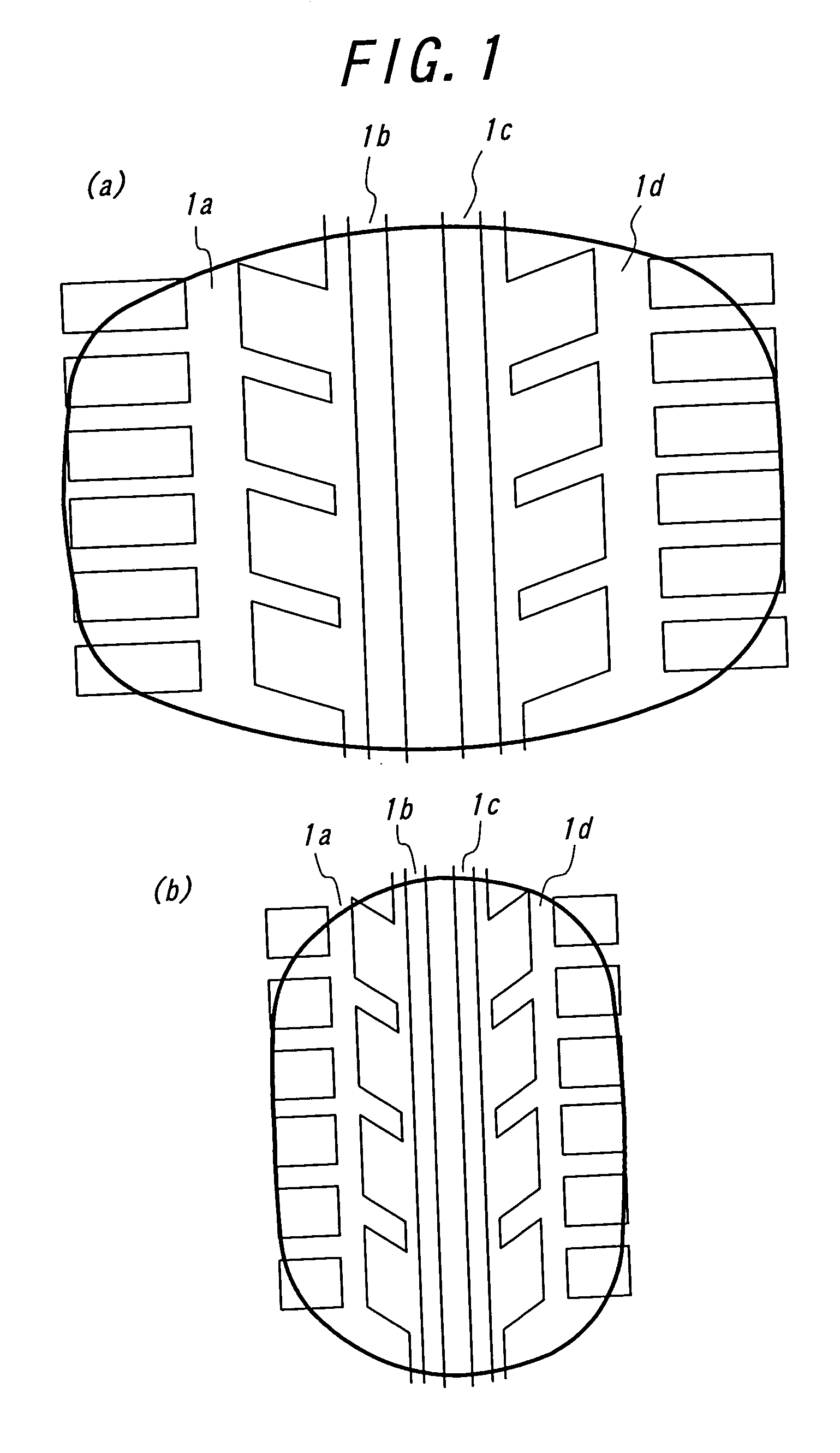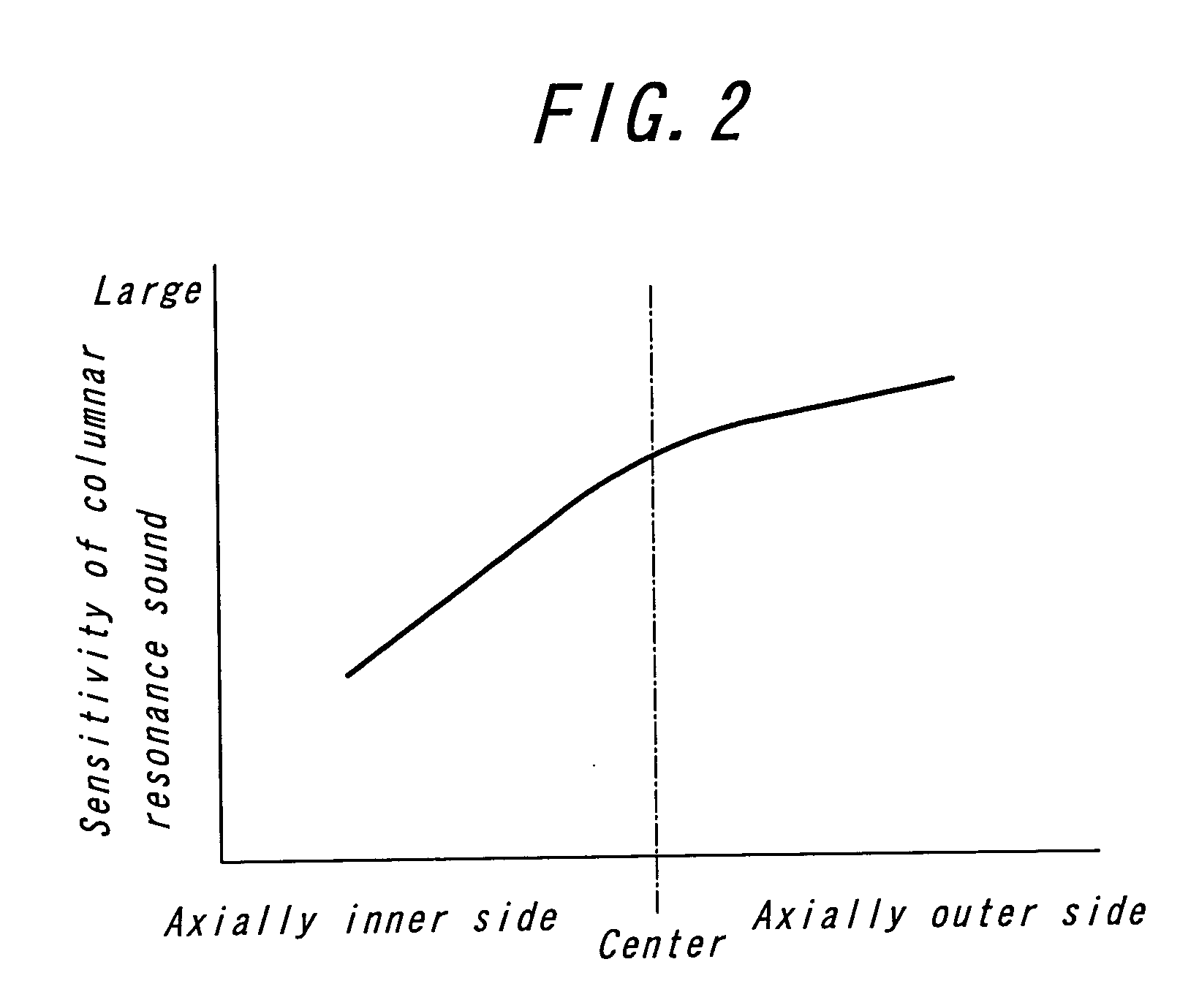Tire with asymmetric tread pattern and method of mounting the tire
a technology of asymmetric tread pattern and tire, applied in the field of tires, can solve the problems of not optimizing the performance of tires, and achieve the effect of effectively compensating the conicity for
- Summary
- Abstract
- Description
- Claims
- Application Information
AI Technical Summary
Benefits of technology
Problems solved by technology
Method used
Image
Examples
example 1
[0186] Radial tires having tread patterns shown in FIGS. 13-15 and tire sizes of 205 / 65 R15 in FIG. 13, 205 / 55 R16 in FIG. 14 and 225 / 55 R16 in FIG. 15 are prepared according to the following various specifications. Moreover, constructions other than circumferential groove(s), i.e. land parts defined between mutual circumferential grooves and between circumferential groove and tread end and lateral grooves and slant grooves arranged in the land parts and extending across an equatorial plane of the tire are the same as a basic specification. Also, a ground contact form shown by a heavy line in each figure is a case that a camber angle is applied to a front wheel of the vehicle.
example 1-1
(A) CONVENTION EXAMPLE 1-1: FIG. 13(a)
[0187] There are three circumferential grooves 1a-1c, in which the circumferential groove 1b is arranged on the equatorial plane O of the tire and the circumferential grooves 1a, 1c are arranged at positions each separated apart from both sides thereof at an equal distance. All of these circumferential grooves have a rectangular section of 8 mm in groove width and 8 mm in depth.
(B) CONVENTIONAL EXAMPLE 1-2: FIG. 13(b)
[0188] When Conventional Example 1-2 is compared with Conventional Example 1-1, all of the circumferential grooves are located at a position shifting by 5 mm toward an axially inner side. The groove width and depth are the same as in Conventional Example 1-1.
(C) INVENTION EXAMPLE 1-1: FIG. 13(c)
[0189] Invention Example 1-1 has a rectangular section in which a center position of each circumferential groove is the same as in Conventional Example 1-2, but the groove width is circumferential groove 1a: 8.0 mm, circumferential groov...
example 1-2
(A) CONVENTIONAL EXAMPLE 1-3: FIG. 14(a)
[0202] There are four circumferential grooves 1a-d, in which circumferential grooves 1b and 1c are arranged at both sides of a rib 2 disposed at its width center on the equatorial plane O of the tire and having a width of 20 mm, and circumferential grooves 1a and 1d are arranged at outsides of land parts 3a, 3b disposed at the outside of the groove and having a width of 20 mm. All of these circumferential grooves have a rectangular section of 8 mm in groove width and 8 mm in depth.
(B) CONVENTIONAL EXAMPLE 1-4: FIG. 14(b)
[0203] When Conventional Example 1-4 is compared with Conventional Example 1-3, all of the circumferential grooves are located at a position shifting by 6 mm toward an axially inner side. The circumferential groove 1b is existent at a position of a maximum ground contact length when the tire is mounted on a vehicle at a negative camber of −0.5°. The groove width and depth are the same as in Conventional Example 1-3.
(C) INVE...
PUM
| Property | Measurement | Unit |
|---|---|---|
| inclination angle | aaaaa | aaaaa |
| opening width | aaaaa | aaaaa |
| inclination angle | aaaaa | aaaaa |
Abstract
Description
Claims
Application Information
 Login to View More
Login to View More - R&D
- Intellectual Property
- Life Sciences
- Materials
- Tech Scout
- Unparalleled Data Quality
- Higher Quality Content
- 60% Fewer Hallucinations
Browse by: Latest US Patents, China's latest patents, Technical Efficacy Thesaurus, Application Domain, Technology Topic, Popular Technical Reports.
© 2025 PatSnap. All rights reserved.Legal|Privacy policy|Modern Slavery Act Transparency Statement|Sitemap|About US| Contact US: help@patsnap.com



